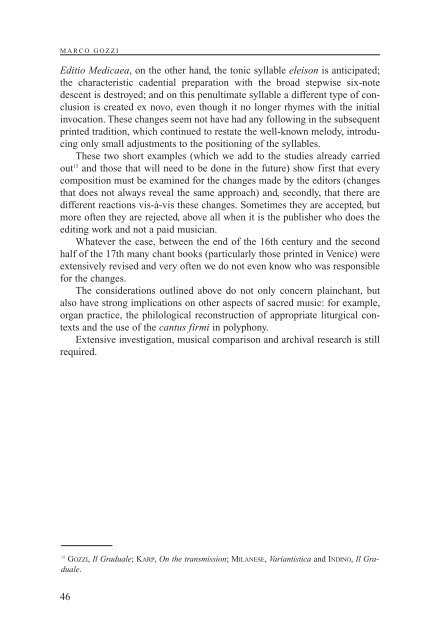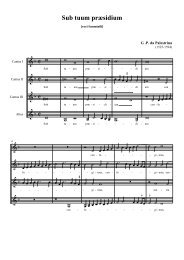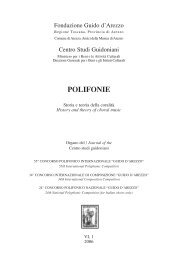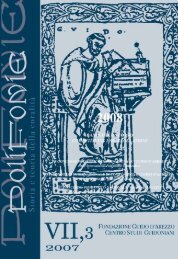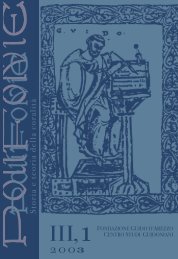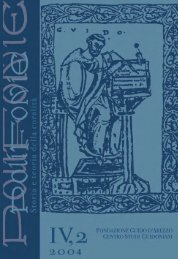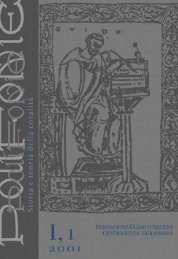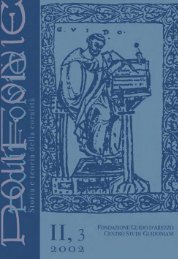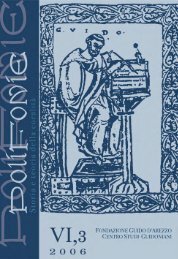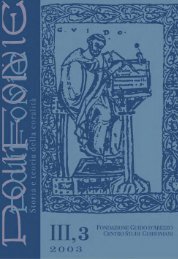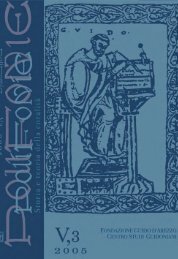Riviste Polifonie/119_2005 n 2.pdf - Fondazione Guido d'Arezzo
Riviste Polifonie/119_2005 n 2.pdf - Fondazione Guido d'Arezzo
Riviste Polifonie/119_2005 n 2.pdf - Fondazione Guido d'Arezzo
You also want an ePaper? Increase the reach of your titles
YUMPU automatically turns print PDFs into web optimized ePapers that Google loves.
MARCO GOZZI<br />
Editio Medicaea, on the other hand, the tonic syllable eleison is anticipated;<br />
the characteristic cadential preparation with the broad stepwise six-note<br />
descent is destroyed; and on this penultimate syllable a different type of conclusion<br />
is created ex novo, even though it no longer rhymes with the initial<br />
invocation. These changes seem not have had any following in the subsequent<br />
printed tradition, which continued to restate the well-known melody, introducing<br />
only small adjustments to the positioning of the syllables.<br />
These two short examples (which we add to the studies already carried<br />
out 15 and those that will need to be done in the future) show first that every<br />
composition must be examined for the changes made by the editors (changes<br />
that does not always reveal the same approach) and, secondly, that there are<br />
different reactions vis-à-vis these changes. Sometimes they are accepted, but<br />
more often they are rejected, above all when it is the publisher who does the<br />
editing work and not a paid musician.<br />
Whatever the case, between the end of the 16th century and the second<br />
half of the 17th many chant books (particularly those printed in Venice) were<br />
extensively revised and very often we do not even know who was responsible<br />
for the changes.<br />
The considerations outlined above do not only concern plainchant, but<br />
also have strong implications on other aspects of sacred music: for example,<br />
organ practice, the philological reconstruction of appropriate liturgical contexts<br />
and the use of the cantus firmi in polyphony.<br />
Extensive investigation, musical comparison and archival research is still<br />
required.<br />
15<br />
GOZZI, Il Graduale; KARP, On the transmission; MILANESE, Variantistica and INDINO, Il Graduale.<br />
46


